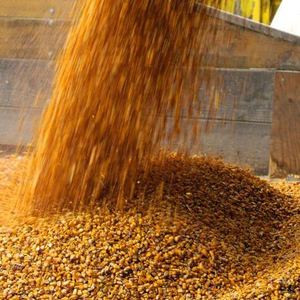USDA: Corn use for ethanol down in February

April 29, 2021
BY Erin Krueger
The USDA recently released its Grain Crushings and Co-Products production report for April, reporting that corn use for fuel ethanol production in February 2021 was down when compared to both the previous month and February 2020.
Total corn consumed for alcohol and other uses was 376 million bushels in February 2021, down 19 percent from January 2021 and down 22 percent from February 2020. Usage included 91 percent for alcohol and 9 percent for other purposes.
Corn use for fuel alcohol was at 333 million bushels in February, down 20 percent when compared to January 2021 and down 23 percent from February 2020. Corn consumed in for dry milling fuel production and wet milling fuel production was at 90.9 percent and 9.1 percent, respectively.
Advertisement
The USDA withheld the volume of sorghum used for fuel ethanol production in February in order to avoid disclosing data for individual operations. Sorghum data was also withheld for January 2021. Approximately 5.857 million hundredweight (cwt) (327,992 tons) of sorghum went to fuel ethanol production in February 2020.
At dry mills, condensed distillers with solubles production was at 92,525 tons, up from 79,610 tons the previous month, but down from 102,244 tons in February 2020. Corn oil production fell to 117,903 tons, down from both 148,527 tons in January and 149,000 tons in February of the previous year. Distillers dried grains production fell to 262,261 tons, down from 342,557 tons in January and 328,113 tons in February 2020. Distillers dried grains with solubles production fell to 1.41 million tons, down from both 1.75 million tons the previous month and 1.82 million tons in February 2020. Distillers wet grains production fell to 885,932 tons, down from 1.04 million tons in January and 1.28 million tons in February of last year. Modified distillers wet grains production fell to 377,688 tons, down from 415,857 tons in January 2021 and 469,444 tons in February 2020.
At wet mills, corn germ meal production fell to 44,416 tons, down from 53,242 tons in January 2021 and 63,305 tons in February 2020. Corn gluten feed production fell to 217,605 tons, down from 282,163 tons the previous month and 281,160 tons in February of last year. Corn gluten meal production was at 97,680 tons, down from 116,178 tons in January, but up from 88,021 tons in February 2020. Wet corn gluten feed production fell to 169,005 tons, down from both 214,623 tons in January and 217,691 tons in February 2020.
Advertisement
At wet and dry mills, carbon dioxide captured fell to 182,552 tons, down from 193,297 tons the previous month and down from 211,775 tons in February 2020.
Related Stories
CountryMark on July 22 celebrated the completion of more than $100 million in upgrades at its refinery in Indiana, including those related to soybean oil storage. The facility produces renewable diesel via coprocessing technology.
ATOBA Energy and Air Moana are partnering to implement scalable solutions for the supply of SAF. The collaboration aims to ensure long-term SAF availability while supporting local initiatives to develop sustainable fuel production in Tahiti.
Neste Corp. on July 24 released second quarter results, reporting record quarterly renewable product sales volumes despite weaker margins. SAF sales were up nearly 80% when compared to the first quarter of 2025.
Valero Energy Corp. on July 24 released second quarter results, reporting a profitable three-month period for its ethanol segment. The renewable diesel segment posted a loss, but the company’s new sustainable aviation fuel (SAF) unit operated well.
The IRS on July 21 published a notice announcing the 2025 calendar-year inflation adjustment factor for the Section 45Z clen fuel production credit. The resulting adjustment boosts maximum the value of the credit by approximately 6%.
Upcoming Events










